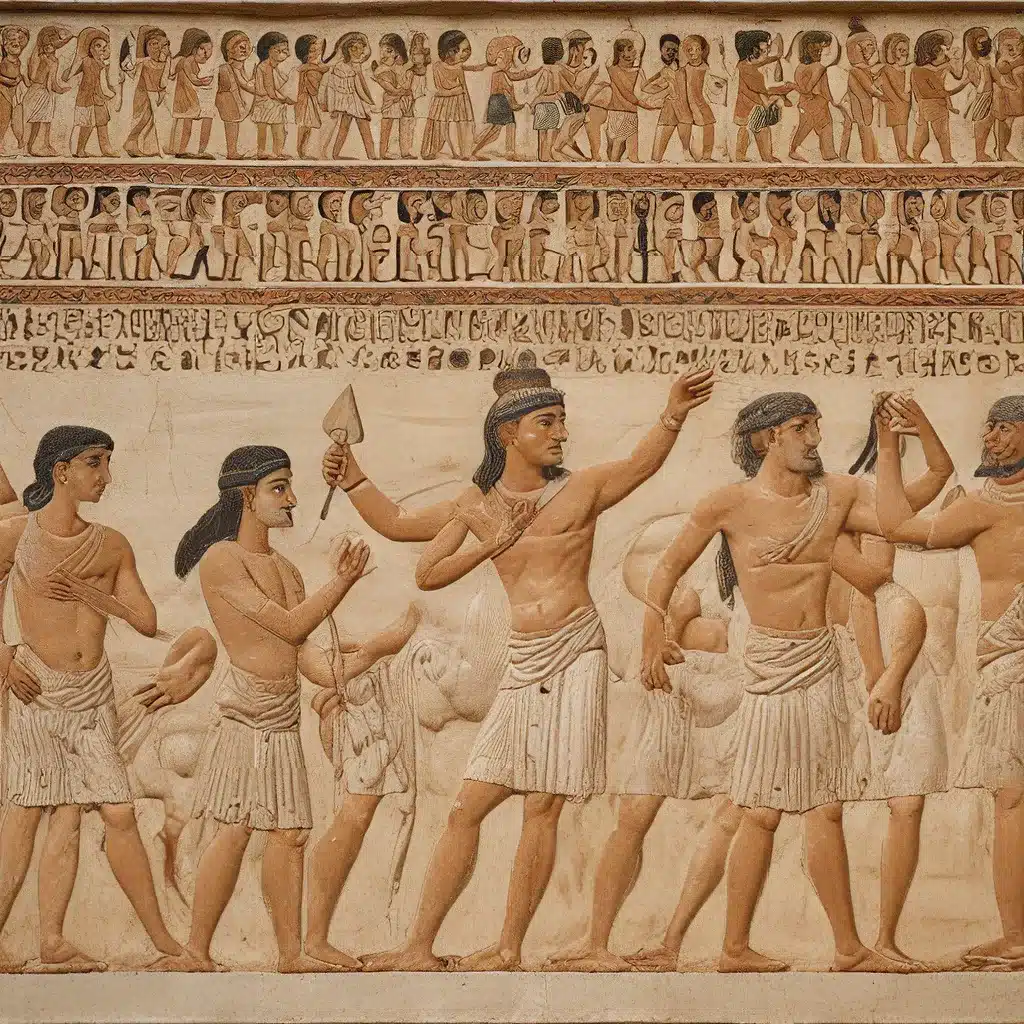
The study of ancient civilizations has long captivated scholars, historians, and enthusiasts alike. Among the many facets of this rich tapestry of human history, the linguistic diversity that permeated the ancient world stands out as a particularly fascinating area of exploration. From the hieroglyphics of ancient Egypt to the cuneiform scripts of Mesopotamia, the ancient world was a veritable melting pot of languages, each with its unique nuances and cultural significance.
The Linguistic Mosaic of the Ancient Mediterranean
One of the most striking examples of linguistic diversity in the ancient world can be found in the Mediterranean region. This bustling hub of ancient civilizations, from the Greeks and Romans to the Phoenicians and Carthaginians, was home to a remarkable array of languages and dialects. Scholars estimate that over 2,499 distinct languages were spoken in the ancient Mediterranean basin alone, each reflecting the rich cultural heritage and traditions of their respective peoples.
The Greeks, for instance, were known for their intricate and nuanced language, with various dialects such as Attic, Ionic, and Doric emerging across the Hellenic world. These linguistic variations were not merely superficial; they often reflected deep-seated cultural and political differences between Greek city-states. The Romans, on the other hand, while predominantly using Latin, also encountered and assimilated the languages of the diverse peoples they conquered, from the Etruscan of northern Italy to the Punic of Carthage.
Linguistic Diversity and Cultural Exchange
The interplay between language and culture in the ancient world was a complex and dynamic process, marked by both conflict and cooperation. As ancient civilizations encountered one another, they often engaged in linguistic and cultural exchange, leading to the emergence of hybrid or creole languages that blended the features of multiple tongues.
One notable example of this linguistic cross-pollination can be found in the Koine Greek, a common language that arose during the Hellenistic period. Developed as a lingua franca to facilitate communication across the vast Macedonian Empire, Koine Greek incorporated elements from various Greek dialects, as well as influences from the Aramaic and Persian languages. This linguistic synthesis not only enabled increased trade and cultural exchange but also served as a vehicle for the spread of Hellenistic ideas and values throughout the ancient world.
Linguistic Diversity and Identity
Beyond its practical applications, language in the ancient world also played a crucial role in shaping cultural identity and social status. The mastery of certain languages, such as Classical Greek or Latin, was often seen as a mark of education and refinement, granting individuals access to the political and intellectual elite. Conversely, the use of indigenous or minority languages could be a source of cultural pride and resistance against dominant powers.
The Phoenicians, for example, maintained their distinctive Punic language despite the expansionist efforts of the Romans, who sought to impose Latin as the primary language of their empire. Similarly, the Egyptians steadfastly preserved their hieroglyphic writing system and Coptic language even as they were influenced by the Greek and Roman cultures that ruled over them.
Uncovering the Linguistic Past
In recent decades, archaeological and linguistic research have shed new light on the intricate tapestry of ancient languages, revealing a wealth of insights into the cultural, social, and political dynamics of the ancient world. The decipherment of cuneiform and hieroglyphic scripts, the analysis of ancient inscriptions, and the study of language borrowings and evolution have all contributed to a deeper understanding of the linguistic diversity that characterized the ancient civilizations.
Scholars have also explored the ways in which language and gender identity intersected in the ancient world, challenging traditional assumptions and opening up new avenues of inquiry. By examining the linguistic representations of gender-diverse individuals and non-binary identities in ancient texts, researchers have gained valuable insights into the fluid and complex nature of gender in the past.
The Enduring Legacy of Ancient Languages
The linguistic diversity of the ancient world continues to captivate and inspire scholars, linguists, and enthusiasts alike. From the decipherment of long-lost scripts to the analysis of language evolution, the study of ancient languages has unlocked a wealth of information about the cultural, social, and political dynamics that shaped the ancient world.
As we delve deeper into the linguistic past, we are reminded of the enduring legacy of these ancient civilizations and the remarkable richness and complexity of human communication across time and space. By understanding the linguistic diversity of the ancient world, we not only gain a richer appreciation of our shared cultural heritage but also a deeper insight into the universal human experience that transcends the boundaries of time and place.
So, let us continue to explore the linguistic tapestry of the ancient world, unraveling its mysteries and uncovering the stories that lie beneath the surface of these fascinating and enigmatic languages. For in doing so, we may just discover the keys to unlocking the secrets of the past and illuminating the path to a more interconnected future**.


